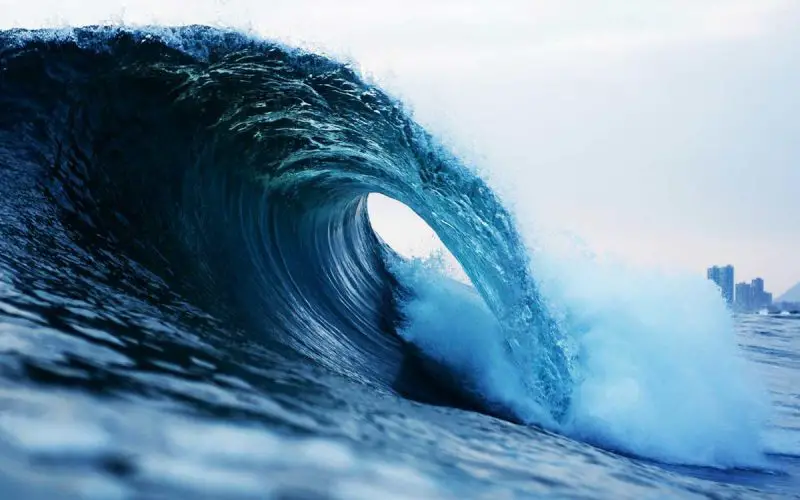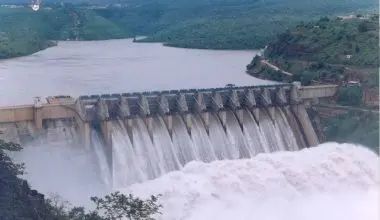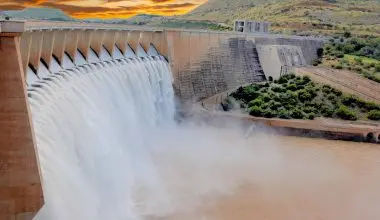Table of Contents Show
The progress in technology sometimes comes at a cost . The discovery of fossil fuels powered the industrial revolution and transformed human society.
Now the same thing that powered the industrial revolution has, in recent years, started to impact our atmosphere adversely and is pulling our world through climate change. This has rapidly diverted our focus to alternative sources of energy to help us curb our dependence on fossils.
One such alternate is the wave energy, which harnesses the energy of the oceans that cover around 70% of the world’s surface. The energy is generated from the waves (which is different from the tidal energy) which depends on varying tides due to change in the gravitational pull.
How is Wave Power Generated?
Despite the fact that it was in 1799 in Paris that the first wave power patent was filed, it still is relatively unutilized although there have been many experiments on the optimum way to turn kinetic energy of waves into electricity.
The common systems that have as yet been tried include free-floating buoys, surface rafts or actuators, float-driven pistons and coastal systems where waves are channelled into the machine. These may be located on shore, near shore or off-shore in deep water where waves are strongest and ocean swells regular.
These systems make electricity according to the methodology adopted; such as having the wave push a column of air past a turbine or drive a hydraulic piston, or by moving electrical coils through a magnetic field – a linear generator.
The power produced then has to be transferred to homes or the grid via cable.
One of the methods is to have buoys anchored to the ocean floor and reach upto six meters below the surface of the ocean . This protects them from the effects of storms on the surface even while generating electricity.
A machine that exploits wave energy to produce other forms of energy is known as Wave Energy Converter. The following image of Pelamis Wave Energy Converter is an example.
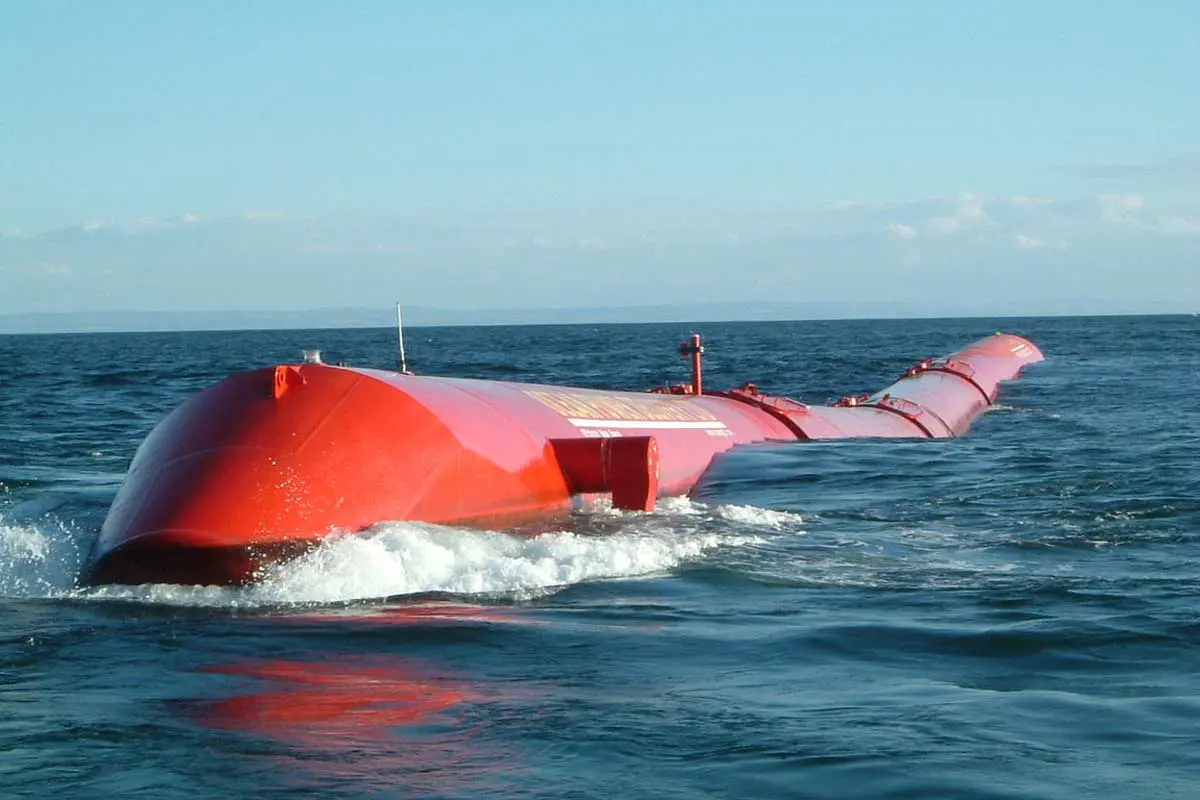
Pelamis consists of a number of semi-submerged cylinders (50 m) connected in series with hinge joints. As the waves move across the length of the machine, these sections will move relative to each other. Energy from this motion is used to move hydraulic cylinders which will push fluid through hydraulic motors. The hydraulic motors then push electrical generators to produce electricity.
Electricity from each joint is carried from the joint to a single cable. This cable runs to the seabed and goes offshore.
P.S: Wave power is measured in terms of Kilowatt-per-meter of wave front (Kw/m). The average wave power is 40 kW/m, more on this ahead.
Advantages of Wave Power
1. No Pollution
Wave energy uses the energy from ocean waves therefore it does not release any pollutants like greenhouse gases from fossil fuels. This makes it a very clean and renewable source that is never going to run out.
2. Constant supply
Unlike some other sources like ethanol, wave power is not limited by any specific season or time. Therefore it is a reliable energy source.
It also does not require any input or work from humans after being set up and thus can be counted on most of the time to deliver energy.
Another advantage is that, with modern weather systems and computers it is now a common thing to predict any changes in the ocean. Therefore, the energy production estimates are very consistent, as compared to others like solar power or wind energy.
3. Reliable Source of Energy
As we’ve just discussed about the ability of wave power to provide energy constantly, we can only be ensured that it’s a reliable source of energy.
Large-scale wave power plants are sometimes used to power entire cities. For example, Wave power produced along Chile’s coast is responsible for fulfilling 26% of the country’s energy demand during winters.
Reliability is one of the essential attributes which are looked at when proposing the use of alternative energy on a large scale. Wave power certainly meets that criteria.
4. Reduced land usage
Since the whole machinery and system is installed in water, there is minimal land use/damage. This is something that has been a rising problem with other renewable and non-renewable resources.
They not only require huge areas of land for construction or mining, but can also lead to various indirectly-linked damages on land.
Some countries have larger shorelines and territorial waters than land territory. Wave power can be a great fit for those countries.
Even at the ocean, wave energy converters use minimal space. Only half square mile of ocean is required to produce 30MW of power, which can power up to 20,000 homes.
5. Minimal impact on on-shore activities
As the system does not require shores so they can be built far from the coasts which means that there is no impact on activities at the shores like fishing and recreation.
These highly flexible farms can also be set up not just far away from shores but also completely underwater, which makes them suitable for places that want to minimize the visual impacts and noise pollution.
6. High efficiency
One of the major disadvantages of renewable energy has been the lack of efficiency with many sources like solar and wind, but wave energy has the potential of generating around 2 terawatts of energy globally.
It has been calculated that around 30 – 40 kW of power can be generated using 1 meter of waves, and this calculation is just for areas near the shores. If a plant is built far from the shores than the estimates rise to around 100kW of power using 1 meter of wave.
Using these values, it has been shown that only half square mile of ocean is required to produce 30MW of power which is quite enough to meet the needs of 20,000 British homes.
7. No Human Resources Needed
These energy converters are highly efficient wave farms which carry a huge energy potential. As stated, wave energy converters do not require human operators on site.
Most of the work is done at the small power station receiving the power on-shore. That is also mostly automated and needs a few operators at maximum. Electrical engineers for maintenance can be contracted on need-basis.
8. Cheap Source of Power
No fuel is needed to power the plants, so only maintenance costs are taken into consideration. These maintenance costs are also limited, especially considering the amount of energy produced.
9. High Potential
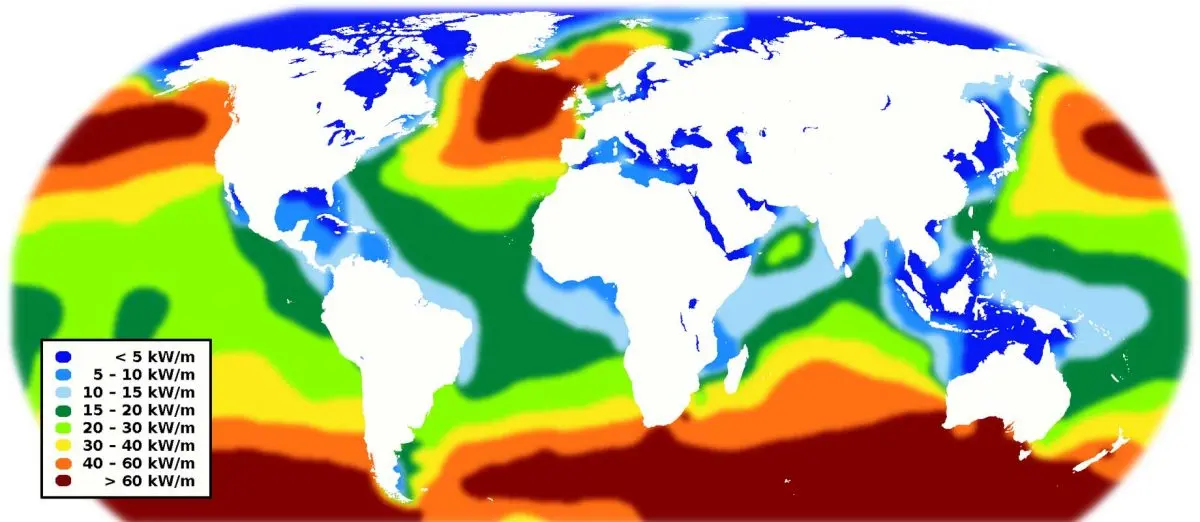
The map shows that Wave power has good potential in locations spread across the world!
This shows that wave energy has extremely high potential in some countries. These countries can use this potential to generate electricity and transmit/sell that power to neighboring land-locked countries.
In best-case scenario; Countries in high potential regions can generate power which can be sold at cost to reduce increasing burden on fossil fuels.
Sadly, this map also suggests that feasibility of installing a wave power plant is very location-specific. We’ll discuss that as the first disadvantage of wave power.
Disadvantages of Wave Power
Although there are many benefits of switching to wave energy, its use is still limited due to some challenges.
1. Accessibility Issues
The biggest challenge is that it requires oceans, which means land locked countries cannot even start to think of harnessing this power.
There are countries which have rivers and other water sources, but wave farms require strong waves with great frequency and power which are only possible in oceans.
2. Can be Quite Expensive
For countries that do have access to oceans, the initial costs for building farms can be very demotivating.
This is because the technology is still in early phases of development and isn’t similar in demand to solar or wind power.
Even if countries do set up their farms in oceans, the maintenance costs can be higher than other energy sources due to continuous exposure to salty water that can easily damage machines.
Natural events like hurricanes, etc. can easily create havoc in these wave farms. Some have suggested that harnessing wave power deeper in the ocean can protect the equipment from such natural calamities.
3. Impact on Marine Ecosystem
The wave energy has apparently been portrayed as a clean source of energy with no damage to land, but those in favor forget that there is marine life present as well.
The floating structures which in many cases are moored to the ocean floor may act as barriers to marine mammals and the migration, affecting fauna and flora on the seabed. The mooring lines could pose a threat of entanglement for some animals, especially larger whales.
Floating wave energy devices could entice sea birds to use the structures as temporary roosts.
Additionally, there is a possibility of water pollution due to potential oil spills from increased boat traffic in the area for maintenance and repair.
Continuous sound from the wave energy generators particularly in rough seas may impact the hunting capacity of whales and dolphins that use echo-location for this purpose.
4. Energy Transmission Problems
Another major problem is the transmission of energy from water to grid stations. The farms generate more electricity when installed far from shore. Sadly however, the farther it gets from the shore, the cost to transmit electricity rises proportionally.
It’s also more costly to access and repair the energy farm when needed.
5. Lack of Investment
Additionally, till now very few projects have started globally which means we are still not completely aware of the impacts of these farms. The slow development of wave energy can largely be attributed to lack of investment.
Wave energy, no doubt, promises a good alternate source of energy but it still is constrained by lack of funding and research. These developments will help to clarify how much impact wave energy farms have on the environment and ways to mitigate them but this requires time.
6. Lack of Subsidies
The large-scale subsidies enjoyed by solar and wind power are yet to be seen with wind power. Since the awareness of wave energy is miniscule when compared with other sources of energy, this is only expected.
Large-scale subsidies are expected in the future when more countries realize the true power of wave energy.
We can certainly hope for such a future!
